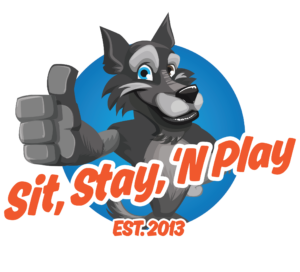It is entirely possible that no one dreads the dog days of summer more than the dogs themselves. As the moist, heavy air gathers itself to create sudden barrages of pounding thunder, crackling lightning and driving, rattling rain at any and all times of the day, all that noise can drive dogs crazy. And then, on the Fourth of July: fireworks.
By some estimates, at least 40 percent of dogs experience noise anxiety, which is most pronounced in the summer. Animal shelters report that their busiest day for taking in runaway dogs is July 5.
Veterinarians tell of dogs who took refuge in hiding places so tight that they got stuck, who gnawed on door handles, who crashed through windows or raced into traffic — all desperate efforts to escape inexplicable collisions of noise and flashing light.
Some vets may prescribe sedatives, but even if the immediate crisis is averted, the underlying phobia remains untreated. Being startled by a loud noise is normal, for dogs as well as humans. Even if most reactions are not as extreme as the dog who tears out its nails while frantically scratching a door, many dogs will cower, pace and defecate indoors.
Prepare in advance. Make sure your pets – cats and dogs alike – have identification tags with up-to-date information. If your pets aren’t already microchipped, talk with your veterinarian about microchipping. This simple procedure can greatly improve your chances of getting your pets back if they become lost. If your pets are microchipped, make sure your contact information in the microchip registry is up-to-date.
Take a current photo of all of your pets, just in case they get out during a storm or loud celebration.
If your pet has historically been anxious on this holiday, or if you have reason to expect potentially harmful reactions, consider behavioral therapy to desensitize your pet and reduce the risk of problems. Some pets may need medication. Consult your veterinarian or a veterinary behaviorist. There is also a list of homeopathic remedies that are available to help your dog during these stressful times. These include oils, drops, and wraps.
Make sure the environment is safe and secure. If your neighbors set off fireworks at an unexpected time, is your yard secure enough to keep your pet contained? Evaluate your options, and choose the safest area for your animals; and make improvements if needed to make the area more secure.
From Lisa Spector, creator of Through A Dog’s Ear, a list of 10 tips for providing a safe July 4th or stormy night in your household with dogs.
- Make sure your dog gets plenty of exercise earlier in the day.
- Keep your dogs inside during fireworks, preferably with human companionship. If it’s hot, air conditioning will help. Bringing your dogs to a fireworks display is never a good idea.
- Provide a safe place inside for your dogs to retreat. When scared of sounds they can’t orient, dogs often prefer small enclosed areas. (I once had a dog who climbed in the bathtub during windstorms.) If your dog is comfortable in a crate, that is a good option.
- If possible, keep the windows and curtains closed. Covering the crate or lowering the blinds can also be helpful. Removing visual stimulation can also help calm dogs.
- Make sure all your dogs are wearing ID tags with a properly fitting collar. Dogs have been known to become Houdini around the 4th of July.
- Leave your dog something fun to do – like a frozen Kong filled with his favorite treats.
Using sensory enrichment to calm dogs:
- Sound Therapy: The psychoacoustically designed music of Through a Dog's Ear has been specifically designed to reduce canine anxiety and has been successfully utilized by dog lovers world-wide. It is most effective when you first play the music well before the fireworks start, at a time the dog is already feeling peaceful and relaxed. He will begin to associate the music with being calm and content. Then play the music a couple of hours before the fireworks start and continue to play through bedtime. The music doesn’t need to be loud to be effective, as it has been clinically demonstrated to calm the canine nervous system.
(This is one of my favorites, and it’s played for my dogs daily. I’ve personally seen quite a difference with both of my dogs and loud noises.)
- Sound Therapy combined with Desensitization: The Canine Noise Phobia series (CNP) consists of four CD's that can be used individually or as a set: Fireworks, Thunderstorms, City Sounds, and Calming. CNP is an innovative desensitization training tool that combines three distinctive elements for the treatment and prevention of sound-sensitivities and noise-phobias:
- progressive sound effects (distant/close)
- specially-designed psychoacoustic music (Through a Dog’s Ear)
- reward-based reinforcement protocols (Victoria Stilwell)
- Tactile: There are two canine wraps on the market that reportedly help sound phobic dogs. The original Anxiety Wrap was invented by professional dog trainer Susan Sharpe, CPDT-KA. The patented design uses acupressure and maintained pressure to reduce stress. The Thundershirt is also a wrap for your dog that provides gentle, constant pressure. Their website reports that over 85% of Thundershirt users see significant improvement in noise anxiety symptoms. Most dogs respond with the very first usage; some need 2-3 usages before showing significant improvement. ( I love this product as well, and use it in conjunction with music therapy during storms.)
- Scent: Canine Calm, an all-natural mist from Earth Heart™ Inc., can help dogs relax and cope more effectively with loud noises and other stressful situations. Directions on their website say to spray Canine Calm onto your hands and massage the dog’s outer ears or abdomen. Or lightly mist the air behind your dog’s head, inside the travel crate or car, or directly onto bedding or clothing.
For more information on how to train your dog, or help during storms, contact us at Sit, Stay, ’N Play. We are located at 1501 North 5th Street in Stroudsburg. 570.872.9748 or online at www.sitstaynplay.net Did we mention that a trained dog is a happy dog?

